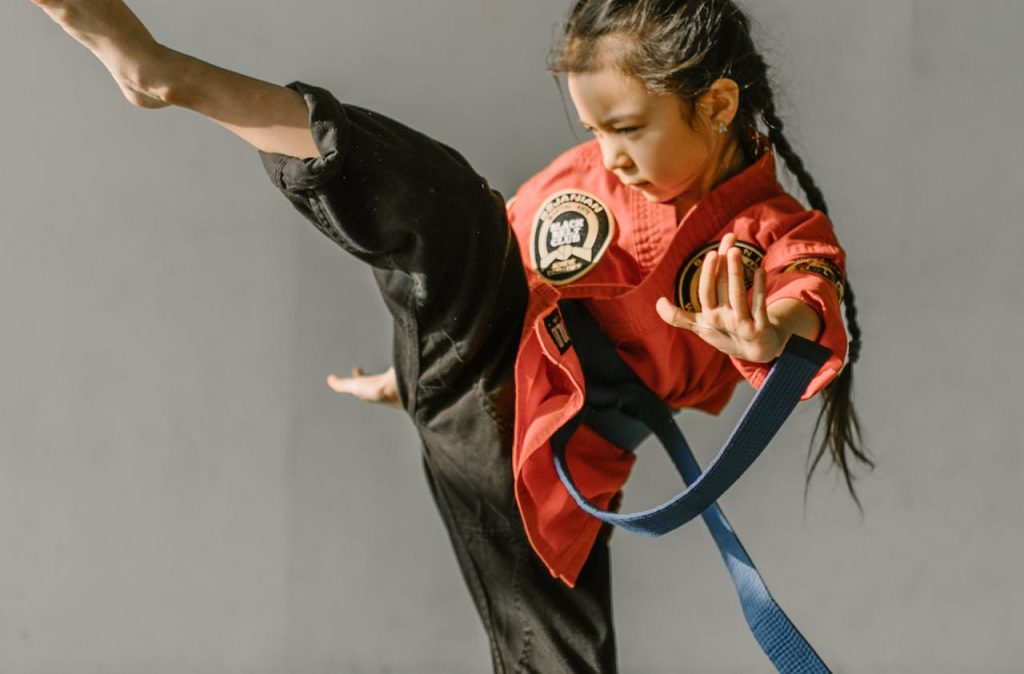Geschatte leestijd: 3 minutenStrength training is good for children. It reduces the risk of injuries and increases athletic ability later in life. However, training specific muscle groups with a split routine is not recommended. At least, according to researchers from the University of Alabama.
Strength Training for Children
Strength training for children remains a controversial topic. There are several misconceptions about strength training for children. Strength training, for some reason, is considered dangerous for children by many people. One of the most common beliefs is that it is bad for growth.
When Cristiano Ronaldo posted pictures on Instagram of his son’s six-pack, there were many negative reactions. “It’s bad to let such young children do strength training,” was a common sentiment.
Nonsense. I was glad to be able to explain this on the radio. ‘Having a six-pack doesn’t necessarily have anything to do with strength training, and soccer carries a higher risk of growth plate injuries than strength training.’
It’s a topic I’ve devoted a lot of attention to. Among other things, in an article about the risks of strength training for children. In that article, I try to make it clear based on research that strength training is often less dangerous than other sports. In another article, I outline the various benefits of strength training for children.
Risks of Strength Training for Children
That doesn’t mean there are no risks (as in any sport). In the article on guidelines for strength training for children, I explain how these risks can be minimized as much as possible.
Almost all of these guidelines were similar to the guidelines for safe strength training for adults. Think of:
- Good supervision
- Gradual progression
- Emphasis on technique
- Adequate time for recovery
In addition, for children, the advice was mainly to focus on exercises that emphasize the coordination of different muscle groups.
New Research on Strength Training for Children
Research from September 2018 prompted an addition to these earlier articles. Researchers from the University of Alabama compared various studies [1]. Studies on ‘youth injuries’, ‘training and growth’, ‘early specialization in sports’, and ‘long-term athletic development’.
Some conclusions follow from their analysis:
- Strength training in youth reduces the risk of injuries
- Strength training in youth reduces the risk of diabetes and metabolic syndrome
- There are available methods to identify premature overtraining (e.g., RESTQ-Sport). This can reduce the number of injuries.
No Split Routine and Emphasis on Compound Exercises
Another outcome is that children should limit isolation exercises before puberty. For example, doing a day of chest-biceps would be discouraged for two reasons:
Firstly, because the large number and repetition of exercises for these small muscle groups (as with adults) increase the risk of injuries and dropouts. Training for muscle growth requires a certain intensity and associated risk profile.
More importantly, before puberty, there are more important goals than muscle mass development. In those early years, the emphasis can be on increasing activity and neuronal adaptation. This is achieved by focusing on balance, flexibility, and coordination. This leads to an improvement in synaptic plasticity. This is the ability of the connection between two nerve cells to change in strength.
This synaptic plasticity is believed to play a much greater role in athletic development after puberty than muscle growth achieved before puberty.
Compound Exercises
So, children should mainly do compound exercises that involve multiple large muscle groups. Think of squats, deadlifts, and pushups.
In addition, focus can be on exercises that emphasize balance and flexibility with resistance. Think of lunges and split squads, for example. Especially focus on exercises that improve muscle coordination.
Think of it as optimizing the performance of an engine before increasing the engine size itself.
References
- Walters BK, Read CR, Estes AR. The effects of resistance training, overtraining, and early specialization on youth athlete injury and development. J Sports Med Phys Fitness. 2018 Sep;58(9):1339-1348. doi: 10.23736/S0022-4707.17.07409-6. Epub 2017 Jun 8. Review. PubMed PMID: 28597618.

